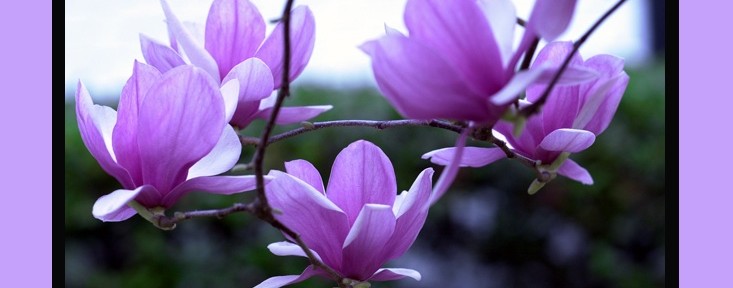Gardeners and farmers are gamblers at heart. Nothing is really guaranteed. Farmers in the Mid-west spend millions of dollars of seed corn in hopes of a crop in the fall of the year. All manner of things can get in the way- drought, monsoon rains, wind, and pestilence- but each year the farmer plants in hope that the single grain of corn will come up a hundredfold. Gardeners do this as well but on a smaller scale. We set out tomatoes, cucumbers or peppers in the hope of fresh vegetables on our table in the summer. It’s a gamble, but we lay our money and our labor on the table in the hopes that we’ll be winners. Much is out of our hands, although we do everything we can to control the outcome.
It’s the same with ornamental horticulture. Some plants are so beautiful that we bet against the odds because, if we win the bet, there is a huge payoff. The Saucer magnolia is such a plant, so beautiful, so stirringly magnificent that we are willing to gamble. Now, you are saying to yourself, what’s the gamble? We’ll get to that in a minute.
The Saucer magnolia (Magnolia x soulangiana) is an Asian import to America that has made itself comfortably at home; to such an extent, we can hardly imagine late winter without their bloom. The Saucer magnolia is a deciduous magnolia that can reach up to thirty feet in height and as much in width. The blooms appear in late winter and early spring in advance of the tree’s foliage. The tree blooms and prospers in full sun to partial shade, making it appropriate in any setting. These trees generally are grown as multi-trunk specimens; and as long as they are not planted in heavy, clay soil, they seem to thrive almost anywhere. They demand little special care, and once established are rarely bothered by disease or insect pests.
The Saucer magnolia can be found in nurseries in a bewildering variety of named cultivars. These are varieties that bloom from nearly white, pink, rose, to purplish red and burgundy.
Smaller is the Star magnolia (M. stellata). Star magnolias have a different flower shape. The blooms are more blousy and star-like, as its common name implies. I think of the Star magnolia more as a large shrub than as a small tree; although, if properly pruned, its shape and form can be very treelike.
Now, let’s get to the gamble. These two magnolias have one drawback. Late winter and early spring freezes sometimes catch them while they are in bloom, ruining the greatly anticipated beauty for which gardeners long . Sometimes gardeners can be exceedingly unlucky year after year, having their magnolia’s blooms repeatedly caught by untimely freezes. But when they finally do bloom in all their magnificence, gardeners are very willing to forgive a few seasons of frost-spoiled blooms. What they do for us on one bright, spring day when they are in rhapsodic bloom will be enough to wipe away the memory of a few years of disappointment at the ‘race track’.
The Saucer magnolia is perfect as a single specimen tree, but they can also be used to great effect when set out as small groves of trees, much like the cherry trees in Washington D.C. are grown. A small grove of a half a dozen or so planted in a naturalistic informal way, can be stunning. Of course, here’s the bet. The more you plant, the sadder you’ll be if they are caught periodically by a frost. Oh, but if you get a splendid bloom three out every five years, it will be worth it. And who knows, you might be lucky. If global warming is real, then maybe our saucer magnolias will never again be caught by a frost. The odds may be getting better for us.

